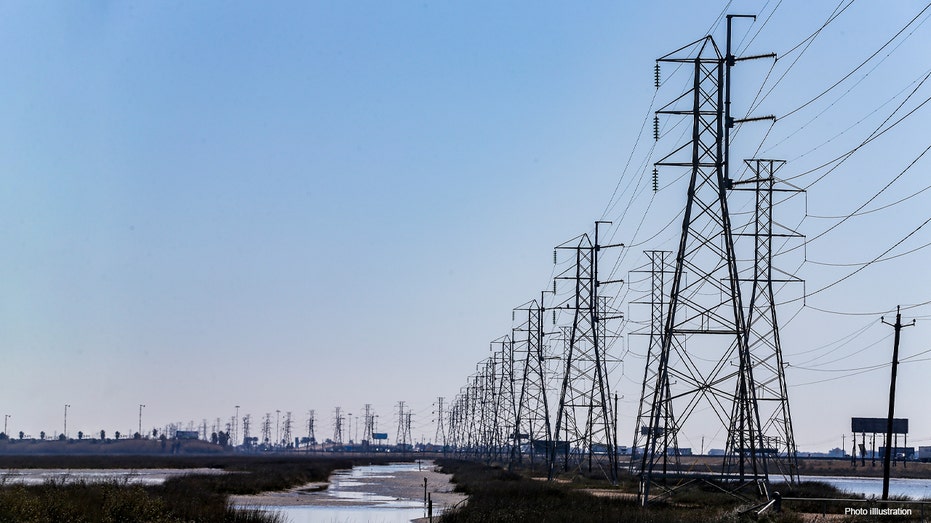Tribes, Industry groups reach deal to boost U.S. hydroelectric power
The compromise deal, which needs congressional approval, is the result of four years of talks
FOX Business Flash top headlines for April 1
Here are your FOX Business Flash top headlines for April 1.
After years of fighting, Native American tribes, environmentalists and the hydroelectric power industry say they have reached a deal on a proposed legislative package that could boost clean energy as well as river conservation.
The compromise deal, which would require approval from Congress, is the result of four years of talks between groups that have long been courtroom and policy adversaries because of disagreements involving vanishing fish populations and changes to river ecosystems. Concerns over climate change have helped them find common ground to potentially expand hydroelectric power, a carbon-free energy source, they said.
The deal seeks to grant approvals to add hydroelectric power to some existing dams in as little as two years, while speeding the approval of off-river pumped-storage projects, which store surplus energy for later use, in as little as three years. Another key component would give tribes, instead of the Department of the Interior, authority on the conditions put on permits for things like the protection of tribal cultural resources or fish passage.
Groups supporting the package include the National Hydropower Association, American Rivers, the Skokomish Tribe, Upper Skagit Indian Tribe and the Union of Concerned Scientists.
ENERGY GROUPS TARGET BIDEN ADMINISTRATION OVER UNWILLINGNESS TO EXPAND DOMESTIC OIL PRODUCTION
"Our respective constituencies have battled each other to a draw for generations," said Malcolm Woolf, the National Hydropower Association’s chief executive.
The change would further tribal self-determination, said David Hawkins, general counsel for the Upper Skagit tribe.
The groups plan to send the package on Monday to House and Senate lawmakers and the White House. During a Senate committee hearing in January on how to add hydropower at nonpowered dams, increase pumped storage and maintain existing hydropower, the groups had promised to negotiate and return to lawmakers with a proposal.

In this photo taken on Jan. 18, 2018, large clouds of steam rise into the sky from the Svartsengi geothermal power station in Grindavík, Iceland. With massive amounts of energy needed to obtain bitcoins, large cryptocurrency mining companies have est
Hydroelectric power makes up about 7% of the U.S. electricity mix. Around 281 hydro-generating facilities, making up roughly one-third of non-federally owned generation, are up for re-licensing by 2030. The re-licensing process usually takes more than seven years and new projects take almost as long, a regulatory environment that has been likened to nuclear power approvals.
PENNSYLVANIA REPUBLICAN SLAMS BIDEN'S ‘COMPLETE ASSAULT’ ON AMERICAN ENERGY
Republican Sen. John Barrasso of Wyoming, ranking member of the Senate Energy and Natural Resources Committee, called the current permitting process for hydropower "a wasteful disaster" because of its yearslong timelines. "I look forward to seeing the agreement various stakeholders have reached," he said Friday.
The proposal would amend the Federal Power Act, first passed in 1920. New Jersey Democratic Rep. Frank Joseph Pallone Jr., chairman of the House Energy and Commerce Committee, said the groups had made an "unprecedented collaborative effort" to modernize hydropower licensing.

Power lines are seen on February 19, 2021 in Texas City, Texas. (Photo by THOMAS SHEA/AFP via Getty Images / Getty Images)
He said he was "committed to ensuring that Congress passes legislation that protects and enhances fish and wildlife populations, water quality, recreational activities, and the role of Tribal Nations, while providing industry with the certainty it needs for this important carbon-free resource."
Advocates will have to navigate a narrowly divided Congress that has been able to find little bipartisan common ground, and say they realize approval isn’t guaranteed.
ENERGY INDEPENDENCE: WHERE DOES AMERICA GO FROM HERE?
Mary Pavel, a member of the Skokomish Tribe of Washington and partner at law firm Sonosky, Chambers, Sachse, Endreson & Perry LLP, said the proposed compromise resulted from a series of "uncomfortable conversations." While most tribes want dams removed to restore the natural flow of rivers, they recognize that won’t happen in many situations, she said.
"Tribes need to be fully at the table as critical governmental agencies whose lands and resources are impacted by these projects," Ms. Pavel said. "This package allows this to happen in very significant and historic ways."
Regulators in many parts of the country want to speed the build-out of renewable energy in response to concerns about climate change. But while wind and solar have logged massive growth, they are intermittent sources of energy.

Steam billows from stacks at the Naughton Power Plant, Wednesday, Jan. 12, 2022 in Kemmerer, Wyo. While the power plant will be closed in 2025, TerraPower announced Kemmerer will be the site of a demonstration nuclear reactor. (AP Photo/Natalie Behring / AP Newsroom)
Hydroelectric power output also can vary based on weather—it has been substantially impacted by the continuing Western drought. But it can generally serve as a steady source of electricity, and as a battery through pumped storage projects, which move water uphill to reservoirs when there is excess electricity, then back downhill through turbines when power is needed later.
GET FOX BUSINESS ON THE GO BY CLICKING HERE
Environmentalists, industry groups and tribes were brought together in the spring of 2018 by Dan Reicher, senior scholar at Stanford University’s Woods Institute for the Environment and former director of climate and energy for Alphabet Inc.’s Google. Mr. Reicher described the first meeting as an "icy room," but said the factions eventually warmed to each other.
In the fall, they advocated for river and hydropower projects in the bipartisan infrastructure bill, which ultimately included $2.4 billion for dam safety, upgrading the existing hydroelectric fleet and accelerating dam removals.




















